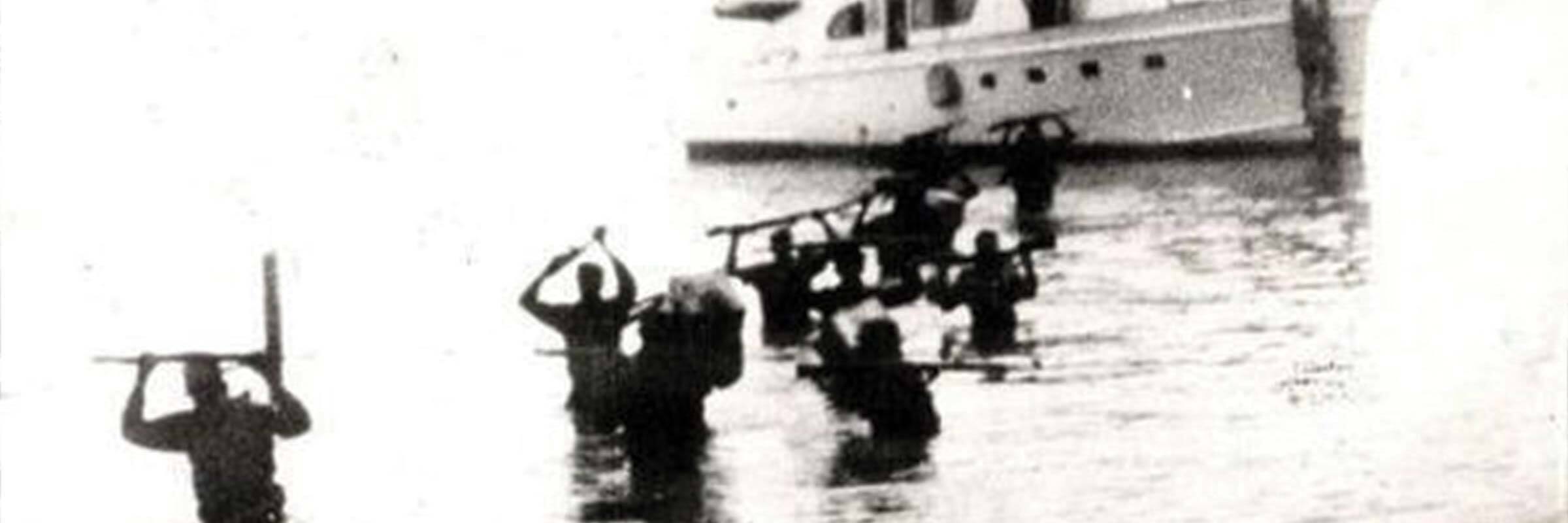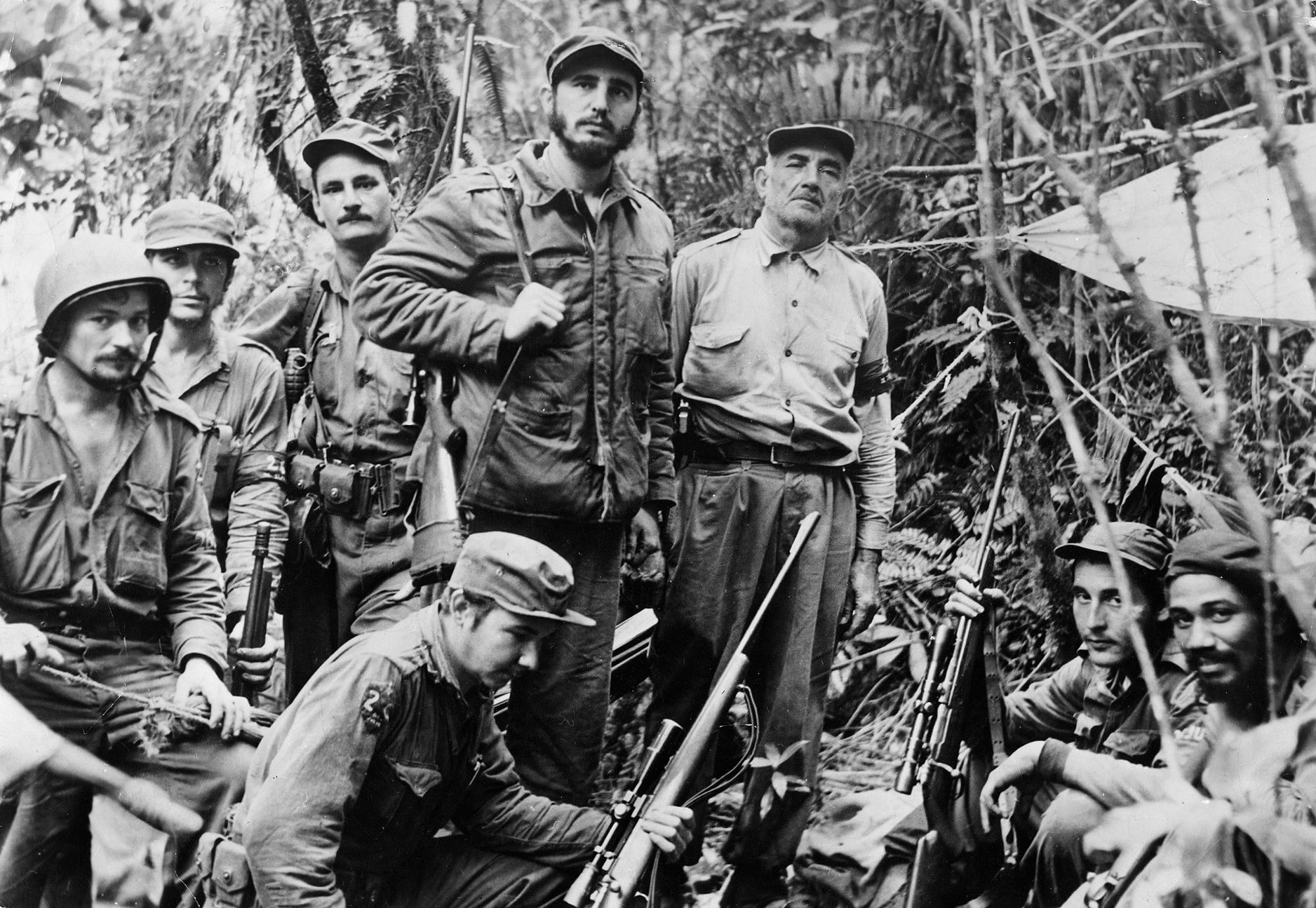
On a windy November evening, a band of rebels huddled anxiously on the banks of Tuxpán River. They were former convicts and future world leaders, Naval officers and weapons smugglers — each willing to risk their life to overthrow a murderous dictator.
Overhead an ominous sky loomed, foreshadowing a harrowing voyage ahead.
Standing between the men and their destiny was a treacherous 1,200 nautical mile journey. And despite stormy seas, poor planning and the infinitesimal odds of overpowering Cuba’s military forces, their ship kept their mission afloat.
That ship was a 58-foot Wheeler warship named Granma.
Granma’s Origins
Howard E. Wheeler Sr. founded The Wheeler Shipyard Corporation in 1910 in Brooklyn, New York, to build high-quality, beautifully designed yachts up to 85 feet in length. By the late 1930s, demand was so high they had to expand their facilities to ramp up production.
Shortly after the United States entered the war in late 1941, the government leased land near the Whitestone Bridge in Queens to the Wheeler shipbuilders. Wheeler immediately switched gears to support America’s defense and began producing a fleet of ships for the Navy, Army and Coast Guard. All pleasure boatbuilding was halted.
Granma was originally designed and commissioned for military use as part of a much larger fleet of ships for the war effort. Her carvel-planked hull was made of long-leaf pine on oak frames designed to accommodate 12 passengers with a cruising speed of 9 knots.
After the war, the military ships built by Wheeler were either sold, scuttled or repurposed for private use.
In 1950, Granma first appeared on U.S. Coast Guard records registered to Baton Rouge businessman Robert Erickson. While on a Gulf cruise, Erickson and his wife fell in love with Tuxpán, Mexico, on the banks of Tuxpán River. They decided to build a vacation home there and slept on their yacht while construction was underway.
One frightening night, the Ericksons awoke in Granma’s cabin to thieves who threatened their lives and took all their valuables. Souring their dream, the Ericksons changed tack and relocated to Mexico City, leaving their beloved boat behind. When a storm rolled through Tuxpán, most likely a direct hit from Tropical Storm Florence in 1954, the story of Granma was almost sunk for good.
Granma’s Unlikely Rebirth
Over a thousand nautical miles away in Cuba, Fidel Castro had instigated an ill-fated armed revolt against the Batista government at the Moncada Army Barracks, which led to a 15-year prison sentence. However, under public pressure, Batista released Castro and his collaborators just two years later, a decision that would come back to haunt him.
Fidel and his brother Raúl fled to Mexico, a hub of anti-Batista activists at the time, including Argentinian Marxist Ernesto “Che” Guevara and Mexican arms dealer Antonio Del Conde. Guevara and Del Conde were the exiles’ closest allies in Mexico City, sharing Fidel’s ideals and arming, hiding, funding, feeding and training his growing rebel band.
While passing through Tuxpán to run errands for the rebels, Del Conde saw a white hull peeking out of the marsh grass on the edge of the river. The ship was clearly wrecked, but the name on the transom was legible: Granma. Del Conde was so captivated by the ship’s beauty, he tracked down the Ericksons in Mexico City. While Granma’s diesels were inundated, her keel was broken and the entire boat was generally a mess after being partially submerged, Del Conde was undeterred in his desire to purchase her. He offered the Ericksons $20,000 — equivalent to more than $220,000 today — to buy a ship requiring significant repairs to ever become seaworthy again.
A Bigger Vision for Granma
Granma became Del Conde’s prized possession. He knew it would take him years to restore the ship to her former glory, but he was committed.
His comrade Fidel was also committed … to plotting a revolution. He fervently believed if he could make it to Cuban shores and survive for 72 hours he would be triumphant in overthrowing Batista. After shooting practice one day, Del Conde went to the river to check on Granma, unaware that Fidel followed him. When he set eyes on the mangled ship, Fidel declared his return to Cuba would be on that very boat.
In an instant, Del Conde’s timeline to restore Granma went from years to weeks. He and his team replaced the keel, planks, generator, lights and wiring. The two diesel engines were sent to a GM factory in Mexico City to be repaired. Del Conde commissioned his armory to fabricate new fuel tanks that maximized the space below deck. Sea trials were conducted to establish fuel burn statistics, but without the tonnage of dozens of men and gear on board, their calculations were merely a stab in the dark.
Sailing into the Storm
November 30, 1956, was the date chosen for an attack against the Cuban military, where allies on the island were expecting Fidel’s amphibious force to lead the fight. Castro knew the journey would take a minimum of five days; yet inexplicably he chose November 25 to depart, ignoring the stormy weather forecast and leaving he and his crew no margin for error.
On the evening of the 25th, Castro’s band of 140 rebels congregated on the bank of Tuxpán River. This posed the first of many challenges – Granma was designed to carry 12 passengers or up to 25 for short trips. Fidel selected 81 men from the group for the mission, including his brother Raúl, trusted aide Ché Guevara and Norberto Collado, a WWII Naval hero with expert navigation skills and an uncanny resistance to seasickness. They packed onto the ship like sardines, shoulder to shoulder with no life vests, only oranges to eat and the hope that they had enough fuel to get to Cuba.
Under the cover of darkness, they sailed down the river and into the Gulf of Mexico where furious seas and 30-knot wind gusts greeted them with impunity.
Tumultuous waters lifted Granma and threw her from cresting waves so hard that the men feared she would sink beneath their feet. The seasick passengers were packed in so tightly they had no choice but to vomit on one another. With the horrendous stench permeating the ship, things went from bad to worse over the next eight hours. The transmission struggled and the men had to bail water out of the boat after the bilge pump failed and Granma took on dangerous amounts of seawater.
For days, Granma’s heavy load struggled against the waves, wind and current. At the helm, Collado slowed her speed to just 6.7 knots, further delaying the crew’s anticipated arrival time.
Ironically, overloading the ship actually made Granma more stable. The weight provided resistance against the roiling seas, without which she would have likely overturned.
Finally, on the third day, the frontal system passed and gave way to mellower seas and sunny skies. After some engine tinkering and winds that calmed to manageable trade winds of 20 knots, Collado revved up Granma to 7.5 knots and steered her toward Cuba.
Making Landfall
Against all odds, Granma’s sturdy construction had delivered them to this point. But their luck was about to run out.
None of the passengers had anticipated such an arduous journey, and misfortune continued to follow them onto land. Guided by the Cape Cruz light, Granma reached Cuba three days behind schedule and not at Castro’s intended rendezvous point with his allies.
Their nautical charts for the coast had been wrong.
Their fuel was low.
Dawn was approaching.
And unbeknownst to them, Batista had caught wind of their surprise attack.
Fearful of being discovered by enemy air patrols, Castro ordered Collado to run Granma aground at full throttle about 100 yards from mangroves. More shipwreck than amphibious assault, the woozy sailors quickly began loading mortars and machine guns into a dinghy, which promptly sank. They had no choice but to lower themselves into chest-deep water and carry their rifles over their heads into the swamp.
The rebels marched through the mangrove forest, but just three days later, their guide betrayed them by leading them straight into an ambush by government troops.
Nearly all of Fidel’s men were killed or captured. A few lucky souls eluded either fate: the Castro brothers, Ché Guevara and about a dozen other men managed to reach the safety of the Sierra Maestra mountains.

The Aftermath
While the initial coup did not go as planned, Fidel and a handful of his comrades lived to fight another day. They rallied a force of about 300 insurgents who took up arms in a succession of victories against government forces. As Fidel’s forces swarmed to nearly 1,000 men, Batista fled to the Dominican Republic in January of 1959. With the previous dictator gone, Fidel’s revolutionary army seized the capital and put him into power for the next five decades.
Granma Today
Norberto Collado was one of the captured rebels during the unsuccessful coup. His comrades freed him from prison in 1959 and he returned to military service. He rose to the rank of captain, and one of his duties was being the caretaker for their beloved Granma.
The Erickson’s former house in Tuxpán was turned into The Mexico-Cuba Friendship Museum, where Granma’s important role in the Cuban Revolution is on full display. You can find Granma restored to pristine condition in a glass-structure behind the Museum of the Revolution in Havana.
Today, the official newspaper of the Central Committee of the Communist Party of Cuba is named Granma, after the yacht that carried Fidel Castro and 81 other rebels to Cuba’s shores in 1956, launching the Cuban Revolution.
